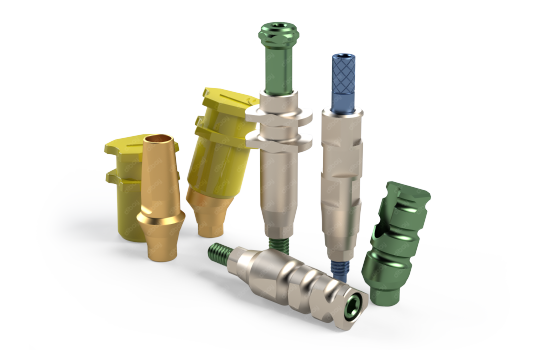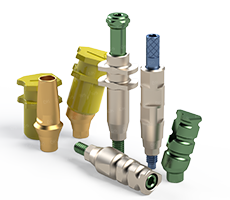Implant Impression Copings | Shop Online - Edison Medical™


Implant Impression Copings
Implant impression copings: it's about making an impression that lasts.
Choosing implant copings with precise results makes all the difference.
Dental Impression Copings
A dental implant impression coping is a device used to copy the exact shape and position of the implant-abutment interface in the impression for accurate positioning of the dental implant analog in the working model.
With an impression coping, the dentist is able to transfer the location of the implant to the laboratory cast in exactly the same position. Implant copings can be screwed either to the body of the implant or to an implant abutment. Materials commonly used for implant impression copings include titanium, plastic and stainless steel.
Impression transfer techniques
There are two principle ways of carrying out an impression transfer: the closed tray technique and the open tray technique. With the closed tray technique, the option also exists to use a snap-on transfer abutment. Below is an overview of the two techniques, as well as of the snap-on method.
The closed tray technique
The closed tray technique creates a model that captures the orientation of the hex, the position of the implant, and the soft tissue profile. It is ideal for situations in which implants are adequately parallel to one another, and is overall more simple and straight-forward than the open tray technique. Unlike the open tray technique, the closed tray technique does not require a hole to be drilled in the impression tray. The closed tray technique may be chosen when the dental professional prefers not to drill holes in the impression tray, or when he or she prefers working with snap-on components, such as snap-on impression copings.
The snap-on technique using a transfer abutment
The snap-on technique is another method that can be used to take closed tray impressions and uses transfer abutments rather than screws. The advantage of the snap-on transfer abutment lies in its versatility; it is snapped onto the dental implant to serve as a coping for impression taking, and can then also be used as a final abutment. While most impression copings/transfers are made from stainless steel, Edison Medical’s snap-on transfer abutments (from the Clicq™-Pression line which is discussed in more detail below) are made from high-grade titanium, which is an ideal material for their second purpose: serving as a final abutment.
The open tray technique
The open tray technique is different from the closed tray technique in that a hole is created in the tray over the location of the implant to accommodate the longer screws that protrude through the tray during impression taking. This technique is preferred in several scenarios. The first is in the case of multiple implants, when the implants are not adequately parallel and it is therefore difficult or impossible to remove the impression tray containing multiple copings. The second is when the implant’s stability is jeopardized, that is, when the implant shoulder is too deep or the soft tissue around the implant is unstable.
If the implant shoulder is more than 3 mm below the gingiva, or the surrounding soft tissue does not support the implant well, the reinforced stability that is gained from using an impression tray to which the impression copings attach can ensure an accurate impression. In this technique, the implant copings remain in the impression material, which means more care is required during clinical and laboratory phases to avoid any movement of the impression copings that could result in any spatial inaccuracies or convergences of implants.
After the impression transfer is complete, the implant analog is screwed onto the implant impression coping for the next phase of laboratory work in which the cast is formed.
Impression coping materials
There are several options for implant impression coping materials, each comes with its own set of advantages and disadvantages. The principal materials used for impression copings are plastic burnout and titanium.
Plastic impression copings
These pop-in/pop-out polyamide implant impression copings are the more economical choice, but are more susceptible to inaccuracy and poor fit during the impression transfer due to a more irregular superstructure than that of a metal coping.
Metal impression copings
With regard to metal impression copings, the most common materials used are titanium and stainless steel, which can be equally effective in their purpose. However, titanium has a major advantage over stainless steel, which is its ability to be anodized. By anodizing the surface of titanium, implant components have greater aesthetic appeal and can be color-coded to help make the restoration process more efficient and intuitive for dental professionals. In the case of impression copings that can also serve as a final abutment, titanium is also preferred for its strength-to-weight ratio, as well as its physical, mechanical and biocompatible properties.
Edison Medical’s Clicq™-Pression transfer abutments
The Clicq™-Pression transfer abutment functions as a versatile component for restorative procedures. This transfer abutment features a titanium nitride (TiN) coating, can be used as a snap-on transfer abutment, and can also double as the restoration’s final abutment. The snap-on feature, as mentioned before, is the alternative to a screwed-on impression coping, and this type of coping is not able to be used as a final abutment. The Clicq™-Pression line also features an angled transfer abutment option, allowing for an easier process during impression taking, particularly for full-mouth impressions and in more trying cases where the implants are off-angle.







